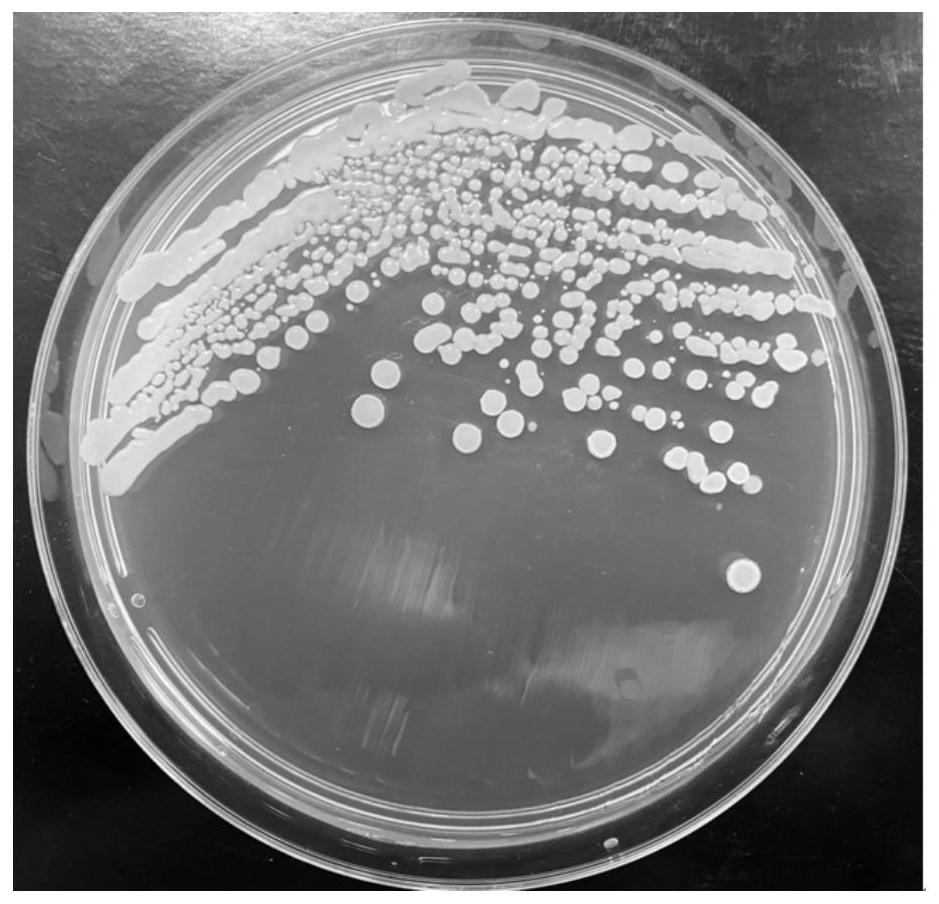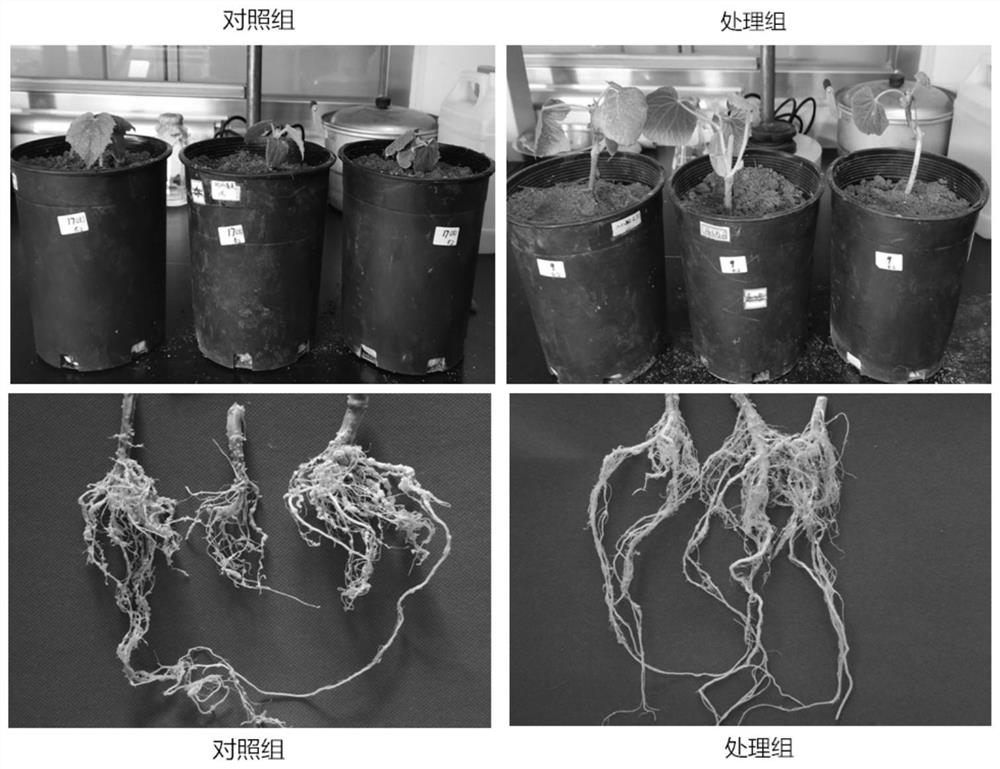Bacillus subtilis for preventing and treating nematode diseases and application thereof
A technology of Bacillus subtilis and Bacillus, applied in the direction of chemicals, applications, and nematocides for biological control, which can solve the problems of less biocontrol agents, etc., achieve a well-developed root system, significant control effects, and inhibit the growth of nematode larvae Effect
- Summary
- Abstract
- Description
- Claims
- Application Information
AI Technical Summary
Problems solved by technology
Method used
Image
Examples
Embodiment 1
[0027] Isolation and screening of embodiment 1 bacterial strain
[0028] 1. Sample source: Cucumber rhizosphere soil in vegetable planting greenhouses in Jimo District, Qingdao City, Shandong Province.
[0029] 2. Strain isolation: using gradient dilution coating method
[0030] Weigh 10 g of soil sample into a 250 mL Erlenmeyer flask with sterile glass beads and 90 mL of sterile water, and shake well. Carry out gradient dilution on ultra-clean bench after standing still, obtain 10 -4 、10 -5 、10 -6 Take 100 μL of each of the three gradient dilutions and spread them on the nutrient agar plate, and repeat 3 times. Afterwards, culture them in a 37°C incubator, observe the growth after 24 hours, classify them according to the characteristics of colony size, shape and color, and pick a single colony for purification and culture. Finally, 4 strains were selected, numbered A1-A4, and kept in liquid glycerin.
[0031] 3. Screening of bacterial strains: contact killing experiment...
Embodiment 2
[0037] Identification of embodiment 2 bacterial strain ZB1
[0038] 2.1 Identification of colony morphology
[0039] Such as figure 1 As shown, the colony of strain ZB1 on the nutrient agar medium is round, raised and sticky, with neat edges, smooth surface, opaque, and the color of the colony is milky white; it can produce spores; the spores are oval, partially round or nearly round , Gram staining was positive.
[0040] 2.2 Molecular identification of 16S rRNA
[0041] The genome of strain ZB1 was extracted using a kit. Then using the genome as a template, the 16S rRNA was amplified using specific primers. The amplified PCR product was detected by 1% agarose gel electrophoresis, and the result showed that the size of the PCR product was about 1500bp, which met the requirements. The PCR amplification product was sent to a sequencing company for sequencing.
[0042]Sequencing results showed that the sequence of the PCR amplification product was SEQ ID NO:1. The sequence...
Embodiment 3
[0049] Example 3 Evaluation of Bacillus subtilis ZB1 Enzyme Production Ability
[0050] 1. Preparation of bacterial solution
[0051] Activate Bacillus subtilis ZB1, pick the activated Bacillus subtilis ZB1 and inoculate it in nutrient broth medium, cultivate it at 37°C, 220r / min for 18h, and obtain a viable count of 10 8 -10 9 CFU / ml of bacterial liquid.
[0052] 2. Preparation of crude enzyme solution:
[0053] The ZB1 strain was inoculated into the nutrient broth medium, cultured at 200r / min at 37°C for 3 days, and the fermentation broth was centrifuged at 12000r / min, and the supernatant was the crude enzyme solution.
[0054] 3. Chitinase activity assay method
[0055] Preparation of colloidal chitin: Weigh 10g of chitin powder and slowly add 500mL of concentrated hydrochloric acid, stir continuously to dissolve completely, then filter, add 4L of pre-cooled deionized water to the filtrate, overnight at 4°C, and centrifuge the next day. Precipitate, wash and centrifuge...
PUM
 Login to View More
Login to View More Abstract
Description
Claims
Application Information
 Login to View More
Login to View More - R&D
- Intellectual Property
- Life Sciences
- Materials
- Tech Scout
- Unparalleled Data Quality
- Higher Quality Content
- 60% Fewer Hallucinations
Browse by: Latest US Patents, China's latest patents, Technical Efficacy Thesaurus, Application Domain, Technology Topic, Popular Technical Reports.
© 2025 PatSnap. All rights reserved.Legal|Privacy policy|Modern Slavery Act Transparency Statement|Sitemap|About US| Contact US: help@patsnap.com



